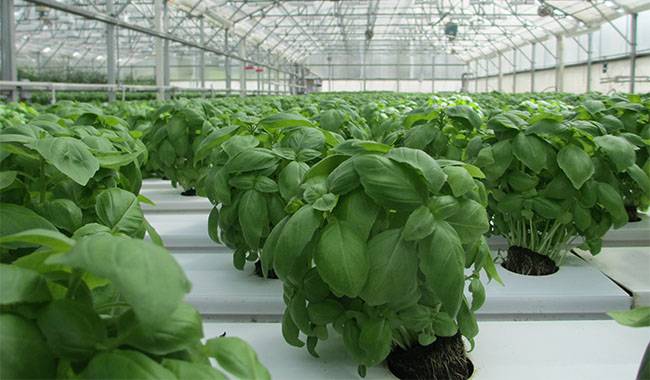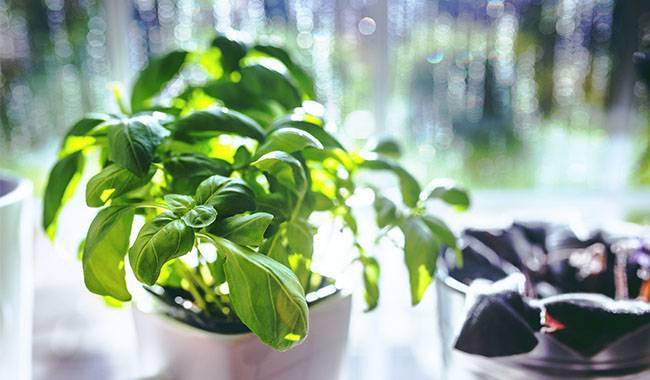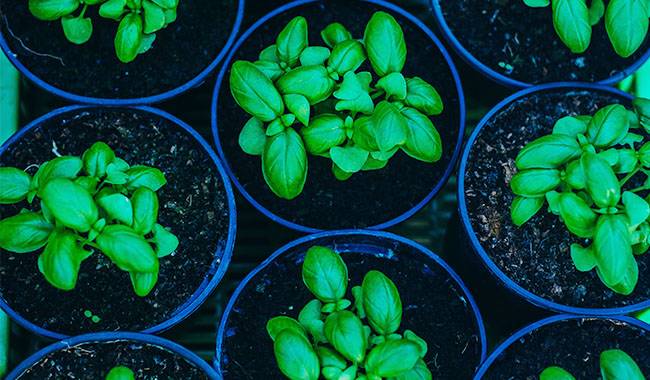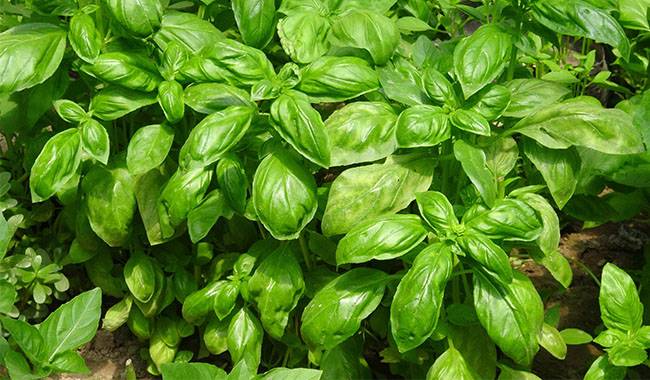
The family has a lover, a healer, and a baker. And it’s all about him too, basil. It is a wonderful herb, known since ancient times, and a medicinal plant that should be in every home and every garden. It is a low maintenance crop, and I want to exclaim: “You don’t have basil in your garden yet? Then we’re coming to you with seedlings!”, in this article, I will describe how to grow basil: planting, growing, caring and harvesting.
BASIL DESCRIPTION
Basil is an annual and perennial herbaceous semi-shrub that grows freely in tropical and subtropical regions. There are more than 70 species of this crop, but about 9 species are grown on an industrial scale for the production of Basil’s spices and expensive oils. In the country, it is mostly grown in the Caucasus and some southern republics.
In some European regions, it often adorns the windowsills of rural houses. Meanwhile, since ancient times, Basil has been considered the “king of spicy herbs” for its strong and peculiar aroma, which can turn any of the most boring dishes into a wonderful dinner masterpiece and cure any disease. A variant of the word “Basil” in some parts of Europe translates to “a fragrance worthy of a king.”
THE MEDICINAL AND CULINARY PROPERTIES OF BASIL
Basil is a must in every garden because of its unusual medicinal and culinary properties. Basil’s chemical composition contains a large number of essential oils, the main components of which are camphor (50-80% depending on the species) and other terpenes. Camphor is used in official medicine as a remedy for cardiac arrest, asphyxia, epilepsy treatment, etc. The highest content of essential oils is found in the leaves (up to 6.5%) and inflorescences (up to 3.5%). Therefore, for medicinal purposes, only these organs of the plant do not have stems.
Basil contains rutin, phytocide, ascorbic acid, vitamins PP, A, B2. It is often used in folk medicine to treat acute respiratory infections and bronchitis. Basil can be used as an antifungal and antibacterial agent for sore throats and bad breath, including tooth decay. Even adding small amounts of Basil to food helps lower blood cholesterol, prevents the appearance of tumors of various etiologies, and prevents the appearance of early aging and memory loss. It improves memory and brain activity, some gastrointestinal disorders, removes toxins from the body, and normalizes the nervous system.
The significant advantages are Basil and in cooking. Adding it to vitamin salads, first and second courses, and sauces promote better digestion of food. The original flavor and tea have a soothing, calming effect.
Eastern folk healers once considered Basil a unique plant that could cure any ailment, and Basil tea was relegated to the elixir of youth because of its effects on the body. Basil was used to making the famous Basil Hayden’s wine. It is also used in perfumes. However, do not overuse it, especially when using Basil for medicinal purposes. It has contraindications related to thrombophlebitis, hypertension, and other diseases.
THE PECULIARITIES OF BASIL CULTIVATION
Basil is grown in a place where it can grow for 3-4 years and then needs to be changed in the bed because of the risk of infection by specific fungi that accumulate over years of constant cultivation. The most common variety used for home cultivation is the aromatic or common Basil. Sometimes it is also called camphor Basil.
BRIEF DESCRIPTION AND CULTIVARS
Basil and its homegrown varieties are annual crops with herbaceous stems. The root system stays in the topsoil. Therefore, Basil needs regular watering, but not too much. The stems are 4-sided and 14-24inch (35-60 cm) tall, depending on conditions. It is a strong tiller, forming 12-15 lateral stems each. The leaves are petiolate and ovate. The tips of the leaves are pointed. Their color varies from green to dark purple. The pigment on the leaves travels throughout the plant. The flowers are small and clustered in spikes. The corolla is white, pink, and light purple. The plant usually blooms from July to September. The vegetative period from seedling to mature takes 60-100 days.
- Christmas Basil – Christmas Basil has 2-inch glossy green leaves, and purple flowers that add a fruity flavor to salads and drinks, and the plant is beautiful in the landscape. A beautiful border plant that averages 16 to 20 inches tall.
- Cinnamon Basil – This variety has a pleasant aroma and spicy flavor. A beautiful 25 to 30-inch tall plant with dark purple stems and flowers accented with small smooth leaves, this is my favorite basil for fresh arrangements, fruit salads, and garnishes.
- Dark Opal Basil – A must-have in my garden, Dark Opal Basil adds color to fresh summer floral displays and depth to dry arrangements and wreaths. Beautiful and spicy in salads or garnishes, it can also be made into pesto to add unexpected color and flavor to your pasta or Italian toast. These plants are attractive in herb gardens and range from 14 to 20 inches in height with purple stems, flowers, and leaves.
- Holy Basil – Holy Basil is a revered plant in Hinduism and is also known as Holy Basil or Tulsi. Its leaves can be used to make tea to boost your immune system. It is a beautiful plant in the garden with mottled green and purple leaves that grow to about 12 to 14 inches tall.
- Lemon Basil. This variety can be added liberally to salads and fish dishes. Lemon basil sprigs are especially delightful in a cup of iced tea on a hot summer day. 20 to 24-inch plants are light green with white flowers and 2.5 inch long leaves.
- Lime Basil – Compact 12- to 16-inch plants with small green leaves and white flowers. This variety’s lime scent and flavor make it perfect for fish and chicken dishes. A simple syrup added to Lime Basil is a delicious addition to tea and margaritas.
- Spicy Bush Basil – A lovely addition to basil gardens, Spicy Bush Basil has small leaves on small, mounding plants that are perfect for potting or arranging in a bonsai-like fashion in the garden. Just a few of these flavorful leaves are needed to add a splash of flavor to a sauce or soup. These plants are soft green, about 8 to 10 inches tall and wide, with leaves 1/2 to 1 inch long.
- Purple Ruffles Basil – A feathery variation on the dark opal, purple ruffles add another dimension to a landscape, floral arrangement, or decoration. It has the same flavor as opal and can be used in a similar manner. It is a 16- to 20-inch tall plant with leaves 2 to 3 inches long.
- Sweet Basil – This basil variety is great for Italian sauces and soups and for making pesto. Varieties include Genovese, Napoletano, Italian Large Leaf, and Lettuce Leaf. Plants are 14 to 30 inches tall and are prolific in hot, sunny locations. The first four leaves are often harvested to keep the plants growing and sweet.
- Sweet Thai Basil – An Asian variety with a distinctive, spicy, anise-clove flavor that is very different from the common sweet basil, Sweet Thai Basil is a must-have in Asian cuisine and is a great addition to the herb garden with its aroma and color. It has purple stems and flowers with green foliage up to 12 to 16 inches tall.
Put Basil in pots in the fall for fresh, fragrant greens and beautiful ornamental plants all winter long.
HOW TO GROW BASIL PLANTS
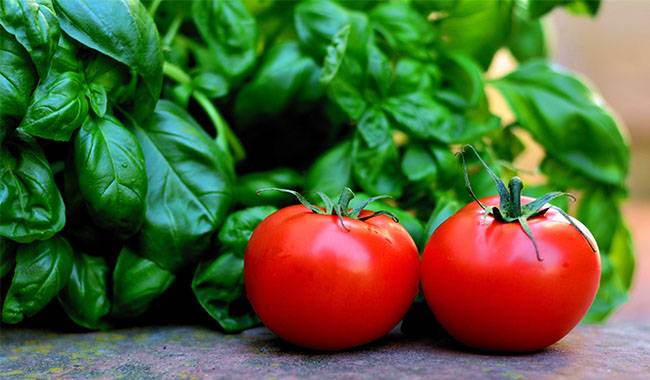
Predecessors and neighbors
In homes where Basil is used in many dishes and harvested in the winter, the crop can be grown in a separate bed. Basil grows very well in mixed beds and can also be used as a compactor. Basil is a thermophilic crop. It absolutely cannot tolerate cold temperatures and has died at 30°F (-1°C.) Basil is best grown in a crop rotation so that it is not shaded by tall neighbors, but they provide protection from wind and drafts.
Soil type does not matter, but Basil needs organic matter and grows better behind organic precursors. The best precursors and bed neighbors are nightshade, chard, beans, onions, and carrots. Basil is poorly tolerated next to cabbage, radishes, and turnips. Beets and beans are neutral to it when grown in mixed beds as predecessors are undesirable. Basil does not tolerate nearby marigolds. They suppress its “subtle nature.”
In the south, Basil can be grown by direct sowing in the soil from seed, in colder areas by the nursery, while in the north, it can only be grown by potted cultivation in protected or flat areas.
Soil preparation
When planting outdoors, dig the soil in autumn, preferably without turning it (especially in poor soils). On soils deprived of organic matter, dig half a bucket of humus, a tablespoon of calcium superphosphate, and a teaspoon of any potash for every 11 square feet dug. In the spring, loosen the bed by 4-6inch (10-15 cm) before sowing or planting seedlings.
Sowing Basil seeds outdoors
It is more practical to track sowing dates by temperature regime. The soil in the 4-6inch (10-15 cm) layer where the root system resides should be warmed to 53-57°F (12-14°C), and the air temperature should not fall below 59°F (15°C). At low temperatures, Basil takes a long time to germinate and develop poorly. The soil for sowing should be carefully leveled and furrowed at 4-6inch (15-20cm) intervals to a depth of 0.6-0.8inch (1.5-2cm). Trenches are moistened.
Seeds can be sown dry or pre-soaked in a rooting solution for 3 hours. Postemergence care includes weeding and loosening the soil until the rows are closed and watered. When watering, a thin, flexible tube is used to run a slight stream of water under the roots. If water gets on the leaves, part of the crop will die. Water only with warm water (water from wells and boreholes heated in the sun).
Seedling cultivation of Basil
In the central and northern regions, Basil is cultivated by seedlings. Seeds are sown in the third month of March or the first month of April. In northern areas, seedlings can be sown 1-2 weeks later to avoid overgrowth.
Prepare a soil mix or buy ready-made soil for sowing. Plant seedlings in a standard seedbox or other containers. Wet the potting soil before sowing. Sow seeds directly into the ground or furrow at 0.2-0.4inch (0.5-1 cm) and cover with sand or fine mulch, preferably with dark film. Sprouts appear on days 4-5 at 68-77 °F (20-25 °C). After germination, the film is removed, and the box with the seedlings is placed closer to the light. A special temperature regime for seedlings is unnecessary, but the room temperature should be at least 62 °F (17 °C). Soil should be moist (not wet).
Sprouts should be spaced 0.8-1.2inch (2-3 cm) between plants in the row. At the stage of 2-3 true leaves, break the seedlings into individual pots or boxes, leaving 2-2.4inch (5-6 cm) between plants. If the plants look normal, do not fertilize them. If they are wilted, elongated, and weak, prepare a solution of nitroglycerin (10 g/1.3 Gal warm water) and carefully water the seedlings under the roots after picking. To make Basil plants more luxuriant, the tops should be pruned at the 5 leaf stage.
About 7-8 days before planting, harden the 40-50 day old seedlings in a cooler room or aeration (in a greenhouse). They should be planted in the ground at the beginning of June. Seedlings should have 5-6 normally developed true leaves. The planting scheme is row spacing with 10inch (25 cm) between rows and 12inch (30 cm) between shrubs in a row.
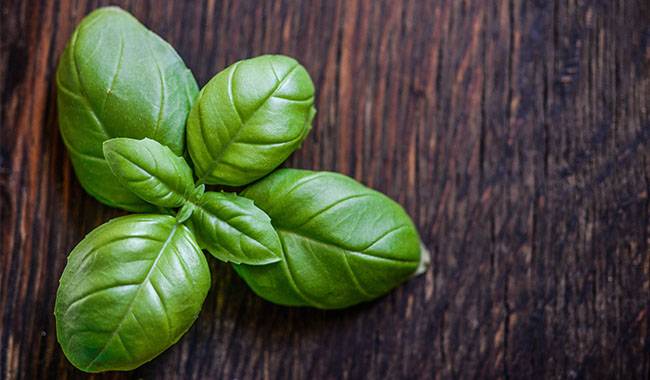
BASIL CARE
During the first 2 weeks after planting, water Basil constantly and in small amounts. The rest of the time, water as needed. The soil under Basil should be kept weed-free and plastic at all times. Plants should be pruned, as overgrown plants can cause fungal infestations of gray mold. To add foliage, remove emerging inflorescences from young plants. Removing inflorescences promotes the formation of young shoots and keeps the leaves juicy. The green leaves on flowering plants are bitter. Those below begin to turn yellow and dry out.
PROTECTS PLANTS FROM DISEASES AND PESTS
Basil is quite resistant to diseases and pests. It is a good repellent to flies, mosquitoes, five-spotted ladybugs, and other pests. Sometimes aphids, spider mites, and small field insects attack young seedlings. The chemical should not be used on green crops. Plants can be sprayed with onion peel infusions or other non-toxic herbs. It is best to treat with biological agents. They are harmless to humans, animals, and beneficial insects. Such preparations include Bitoxybacillin. They can be sprayed on young plants. Over time, Basil plants will exhibit repellent properties, and aphids and spider mites will perish.
If left unmaintained, Basil can develop blackleg, fusarium, and gray rot (overgrowth, overwatering, high humidity in the greenhouse, etc.). In this case, preventive measures will help, mainly by removing diseased plants, drying the topsoil, and treating them with biological agents. The dilution and the number of treatments are indicated on the package or in the recommendations.
HARVESTING BASIL
The quality of harvested greens is not limited. When greens form 4-4.7inch (10-12cm) above ground, remove individual leaves as needed for fresh use or winter storage. Leaves and inflorescences are best frozen but can also be dried in the shade by spreading a thin layer on a towel or tablecloth (not film). The dried leaves are ground and stored in glass jars with lids. A few bushes are left until the end of the growing season to collect seeds. The seed pods are harvested as they begin to ripen in the brush of the lower seeds. They take on a brown color. Seeds are stored in a dry place for 4-5 years, which keeps them from germinating.
BASIL IN THE LANDSCAPE
Basil belongs to the category of ornamental foliage plants. It can be grown as a border plant to shade the edges of beds. It combines beautifully with bluebonnets, groundnuts, oregano and mint, and hostas. It coexists well with young roses and protects them from aphids.
More Related Information About Planting & Growing Basil Plants





